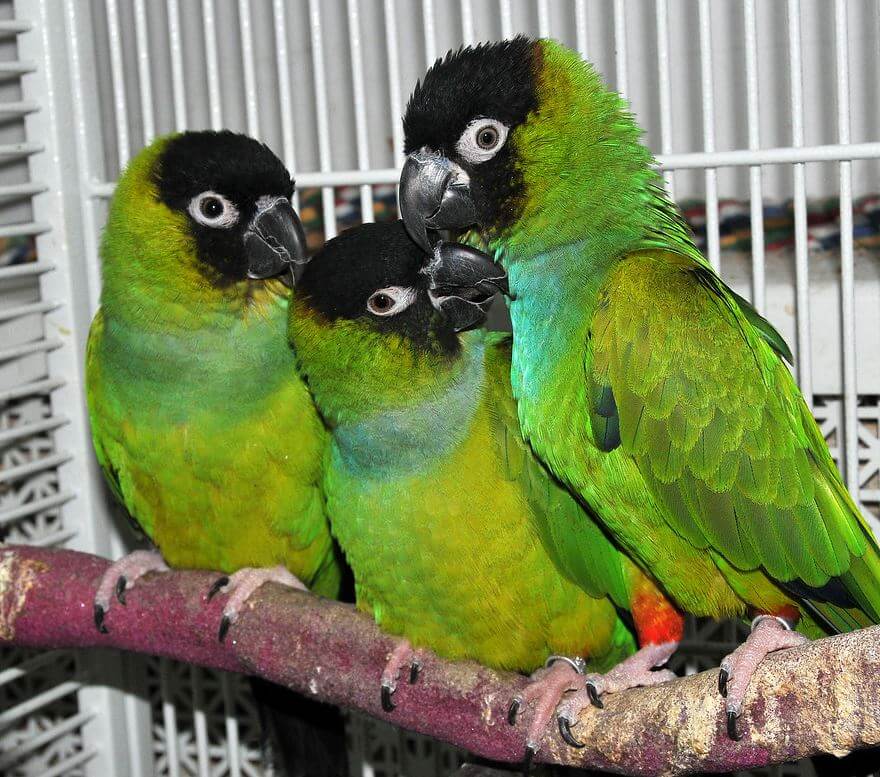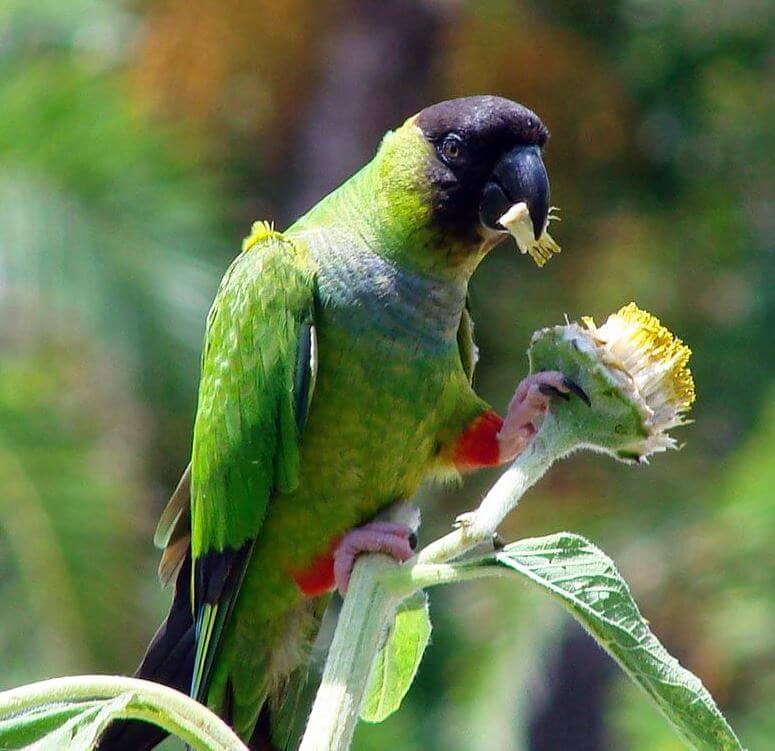The Nanday conure ( Aratinga nenday, syn .: Nandayus nenday ) is a species of bird in the subfamily New World parrots. The species occurs in South America.
The species was previously considered to be a member of the monotypic genus Nandayus Bonaparte, 1854.
However, phylogenetic evidence has shown that it fits into the genus Aratinga. When this genus underwent a revision based on previous studies and was separated into four genera, it was placed in the current genus Aratinga.
According to a phylogenetic analysis based on mitochondrial DNA of the genus Aratinga made by Ribas & Miyaki (2004), the species forms a monophyletic group with the yellow conure ( A. solstitialis ), the conure ( A. jandaya )) and the red-fronted jandaia ( A. auricapilla ).
In another study (Tavares et al. 2005) with an analysis of mitochondrial and nuclear DNA from 29 species, representing 25 of 30 genera of the subfamily Arinae, it was found that the closest relative of the black-headed parakeet is the jandaia. yellow, and that the divergence between the two species happened from 0.5 to 1.3 million years ago.
Hybrids are known between this species and the jandaia and also with the blue-fronted aratinga.
A prehistoric relative of this species was described in 1996 as Aratinga vorohuensis , based on Piacenzian fossils found in Argentina.
Description

The predominantly black head is striking: the forehead, crown, reins, cheeks, and chin are black. In contrast, the back of the head and the neck as well as the ear covers are yellow-green.
The chest has a striking blue tinge. The under breast and belly are yellow-green, and the back and upper tail-coverts are green. The under tail-coverts are yellow-green.
The tail feathers are deep dark gray on the underside, olive green on top, ending in a blue tip. The beak is black.
Nanday conure size
The Nanday conure reaches a body length of 30 centimeters. The plumage is predominantly green.
Distribution
The Nandaysitich is found in southeastern Bolivia, southern Mato Grosso, Paraguay, and northern Argentina.
It mainly uses savannas and palm groves as its habitat. Sometimes it forms large swarms. The animals feed on seeds, fruits, nuts, and berries.
They are cave breeders that occasionally move into cavities in fence posts.
What it is like having a Nanday Conure
SOURCE: My Little Parrots
Nanday conure diet

The species feeds on seeds, fruits, palm seeds, berries, flowers, and buds. Feral individuals also go to feeders.
Wild individuals mainly use the bush forest and clearings near villages. They frequent the open savannah, grasslands, and corrals in South America, and in some places are considered agricultural pests.
Reproduction
Black-headed parakeets often use holes in trees as a nest. Females lay three or four eggs. After raising their offspring, a large flock is formed until the next breeding season.
Nanday conure Behavior
The Nanday conure was first imported to Europe in 1870. It still plays a role in ornamental bird husbandry. Keeping at least pairs in aviaries is necessary for species-appropriate keeping.
Nanday conure breeders
SOURCE: BirdTricks

